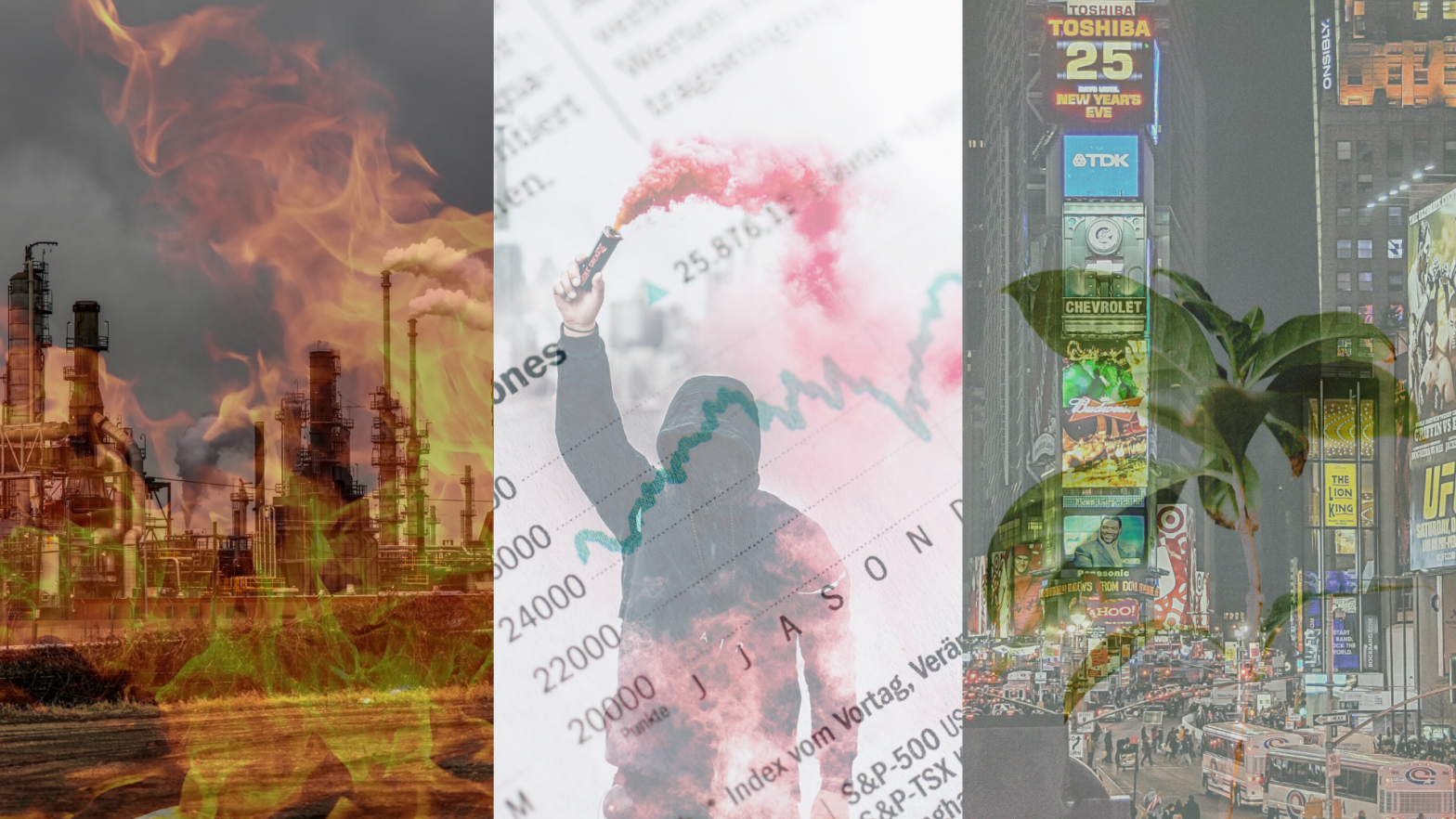“Narratives form our reality. We become their vessels. Stories find, capture, and hold us. Our lives are shaped by the stories we hear as children, some fade as we grow older, others are reinforced by our families, churches, and schools. From stories we absorb our goals in life, our morals, and our patterns of behaviour.” (Merchant, 1992)
Even though all of humanity is now living in a time of climate emergency, according to Gills and Morgan (2019), we are not yet acting like it. Large-scale international efforts such as the formation of UNFCCC in 1992, the Paris Agreement and following COP-process have inarguably been huge efforts, but they have also been huge failures.
You might wonder how so? Let me break some of it down: Annual carbon emissions have increased since the 1990 benchmark year in Kyoto. During this same time period the amount of government subsidies to fossil fuel industries have increased in almost every country, more than doubling between 2010 and 2017 (Stefanski, 2017). In 2018 fossil fuel subsidies were double the combined value of all subsidies to renewable energy, electric vehicles and carbon pricing scheme revenues (IEA, 2019). Production Gap Report, published in November 2019 shows that we are currently on the track to produce 120% more fossil fuels than can be burned under 1.5°C warming. The clothing industry, responsible for more emissions than aviation and cargo shipping combined (UNEP, 2019) has doubled in the last 15 years. The still increasing global aviation industry is responsible for emissions, which alone could result in 1,5C degree increase in global temperatures (Sail To the Cop, 2019; IATA, 2018). Global deforestation has also increased between these years (Kim et. al., 2015; Global Forest Watch). Meat production, representing 14,5% of all greenhouse gas emissions globally, (FAO, 2019) has increased 4-5-fold since 1961. I could go on, but I think you get the gist.
So, how can it be that during a time when climate talk has increased and there are more environmentally minded policies and people than ever, we have continued to intensify the climate emergency? By examining the current climate emergency through world-ecological theory and the concept of societal imaginaries, I argue that a significant factor behind the insufficient action and our failures is the distorted ways in which we perceive the problem, the world and our place in it. Bringing imaginaries to the forefront of examining responses to the climate emergency lets us uncover the reasons why we act as we act and might help us to find ways to sustainably coexist with the non-human nature.
Imaginary foundation of society
To understand the physical, concrete structures and the ways of being and acting within our world (including how we respond to wide-scale emergencies such as climate change), we should also examine the thought-structures and ideas, which lie behind all of our actions. According to philosopher Cornelius Castoriadis (1987) those thoughts, ideas and stories form the imaginary foundation of reality, which offers the structure according to which we humans interact with, influence and act upon the rest of nature.
Following Castoriadis, I refer to imaginaries as representations of individual and social existence. They are the “truths” according to which we live our lives, the widely shared understandings of “what is” and “how it is”. Imaginaries form the operational force behind everything we do. However, we do not often realize that our thinking is not neutral, a-historic or necessarily reflecting “reality”.

The reason why it matters how we perceive (for example) the rest of nature is because mental processes related to the relations between humans and non-human nature determine how we act in those relationships. Because of our societal imaginaries characterized by externalization and othering (describing largely our current capitalist world-ecology), we have learned to see the other(ed) beings as outside of morals, empathy and actorship, thus making it possible to exploit, oppress or conquer them. This same dynamic can be found behind other exploitative human-nature relations as well as racism, sexism and colonialism. These processes of externalization, commodification, cheapening and de-holistic worldviews are what have enabled the domination of capitalism in our world. Historical capitalism has been able to produce material good for some humans, because it has extracted the means for that from most of non-human nature (minerals, land, other animals etc.) and other(ed) humans.
Therefore, negative environmental impacts are not side effects of capitalism; they are intrinsically part of capitalism as a production system. In other words, capitalism is a mode of productiononly because it is a mode of destruction. This seemingly paradoxical prerequisite of capitalism is at the center of our current climate emergency and can be only understood, if we also examine the foundations of what makes it possible for some humans, corporations or states to exploit, extract, pollute and emit as freely as we currently do. Understanding the imaginary foundation of our current world-system is necessary, because it is not enough anymore to try to understand the illness behind the symptoms, but we also need to understand what are the circumstances that create the illness in the first place, to make sure that we won’t ‘get sick’ again.
What does this have to do with climate politics?
Climate politics (and the discussion in general) often seem to avert logic and fact, because the issues we are facing are often in juxtaposition with the narratives and imaginaries we use to make sense of the world. Psychologist and economist Daniel Kahneman talks about a cognitive bias, called the “What you see is all there is”, which refers to our shared tendency to act and make decisions according to familiarity. We are more likely to continue to act according to something we know, regardless of the quality or validness of our knowledge. The amount of global cognitive dissonance (referring to mental discomfort/psychological stress experienced by a person who holds two or more contradictory beliefs, ideas or values) echoing in our dying world tells the story of how everything we hear of the climate emergency is shaking the foundations of what we know to be true, and our place in the world.
However, the ridiculousness of the forespoken way of understanding the world has been widely realized by some (for example in degrowth- and the global climate movements). In addition, numerous communities and peoples have for long lived their existence through alternative and more convivial cosmologies, many of which are indigenous (such as vivir bien in the Andes, Ubuntu in Southern Africa, Eco-swaraj in India). The problem is that the harmful, disconnected and exploitative imaginaries of modern capitalist worldviews are still the most dominant ones, permeating the epistemological culture of most governments, international climate discussion and environmental politics.
Good news is that all paradigms, imaginaries and ontologies can be unlearned. Reading the science, learning about actually sustainable worldviews, realizing the urgency and accepting the uncomfortable are the first steps to do this. By unlearning the hegemonic, harmful and distorted worldviews, we can build new imaginaries and truth systems, which embrace intra- and interspecies solidarity, connectivity of all and web-of-life’s self-sustaining metabolisms.
So, start unlearning.
Saana Hokkanen
Saana Hokkanen is a master student at the University of Helsinki, majoring in development studies and interested in world-ecological theory and post-capitalist imaginaries. She has worked at the Helsinki Institute of Sustainability Science (HELSUS) and is currently working as a research assistant at the Global Extractivisms and Alternatives initiative (EXALT).
Photo by: Saana Hokkanen (using Unsplash)

